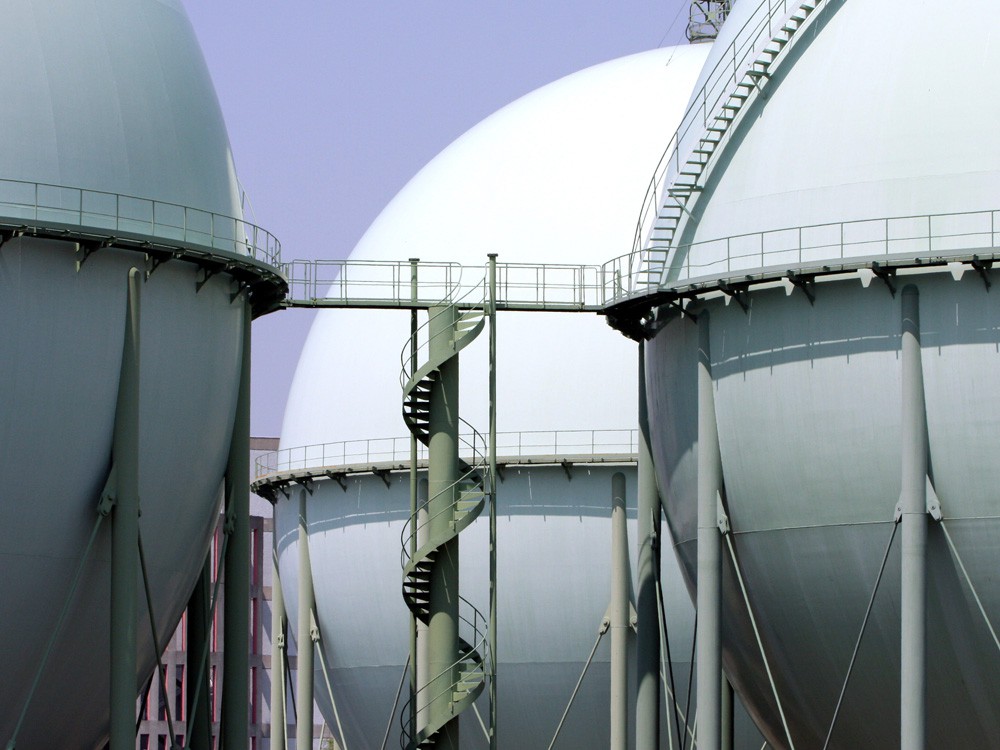Products You May Like
Natural gas prices can get 775% higher there and Canada is closest to the market

Article content
If you’ve heard that Canada should skip plans to export natural gas to Asia, including from a few anti-oil and gas academics – none of whom, we’re betting, has ever run an energy company — you’ll notice one theme that pops up: there’s no money in it.
This reasoning is daft. If there was no profit potential, energy firms would either figure that out or go broke trying. The attempt by some to “helpfully” warn off Canadian energy companies is a transparent attempt by anti-oil and gas advocates to find yet another reason to bash one of Canada’s biggest employers and providers of tax revenues to all levels of governments.
As we document in a new report, there’s a big difference between what natural gas fetches here at home and what it can sell for in Asia. That Asia price premium is something energy firms in countries such as Qatar and Australia are well aware of, which is why they have long been selling their gas into Asia.
Article content
For perspective, let’s first compare natural gas prices in Canada with those in the American market, which, because of a lack of liquefied natural gas (LNG) plants on Canada’s coasts, is currently Canada’s only export market. Though 18 LNG projects have been proposed only one is currently under construction. All the others have been held up or cancelled because of regulatory and financial delays and barriers, along with anti-natural gas activism. In comparison, Australia has 16 LNG liquefaction terminals, Qatar has 12, and the United States, seven.
Between 1990 and 2019, American and Canadian natural gas spot trading prices tracked each other closely. The narrowest price gap was in 2008, when U.S. natural gas sold for U$8.85 per million BTU, just 11 per cent higher than the US$7.99 Canadian gas fetched that year. The widest gap between the two countries was in 2018, when U.S. natural gas sold for US$3.13 per million BTU, fully 179 per cent higher than the US$1.12 average fire-sale price that obtained in Canada that year. Even then, however, the price difference between Canada and the U.S. was just two bucks.
Now consider Asia. Tracking comparable data as far back as it goes, between 2000 and 2019 average natural gas prices in Asia have been significantly higher than in Canada in most years.
Article content
For example, in 2012 natural gas sold for US$2.27 per million BTU in Canada, but for US$18.15 in Asia. Asia’s price was thus $15.88 more, fully 699 percent higher. In 2018, when Canada’s natural gas prices were at rock-bottom, the percentage gap between Canada and Asia reached its widest: Canadian gas sold for just US$1.12 per million BTU versus US$9.80 in Asia. That was a US$8.68 difference — 775 per cent.
To be sure, prices aren’t always that far apart. In 2003 Asian spot prices were only three per cent higher than here, while in 2005 they were actually three per cent lower. But for more than a decade the price gap between Canada and Asia has been obvious and substantial.
Looking at individual markets, in Japan, where price data for LNG goes back to 1990, prices were higher than in Canada in all but two years (again, 2003 and 2005). In every other year, prices were higher by as much as 797 per cent (which occurred in 2018). The widest gap in dollar terms was in 2012, when natural gas sold for US$2.27 per million BTU in Canada but US$16.75 in Japan, a difference of $14.48 or 638 per cent.
In South Korea, where data are available only from 2009 on, prices for natural gas have always been above those in Canada, with the gap varying between US$1.90 (in 2009) and US$13.63 (in 2013) per million BTU. In percentage terms, natural gas prices in South Korea have ranged from 56 per cent more than in Canada (in 2009) to 771 per cent more (in 2018).
Western Canada currently has several cost advantages over other LNG exporting countries such as the U.S., Qatar and Australia. For example, shipping costs to Japan from Canada are estimated at between 99 cents and $1.09 per million BTU. That compares to between $1.50 and $1.54 per million BTU from Qatar, and between $2.40 and $2.45 per million BTU from the U.S. Gulf of Mexico. This is partly explained by distances. For example, the port of Kitimat in B.C. is between 4,076 and 4,734 kilometres closer to Japan, depending which Japanese port is used, than Qatar is.
If you hear an anti-oil and gas advocate claim that Canadian energy companies should avoid Asian markets, know this: They haven’t run the (honest) numbers.
Mark Milke and Ven Venkatachalam are with the Canadian Energy Centre, an Alberta government corporation funded in part by carbon taxes.



